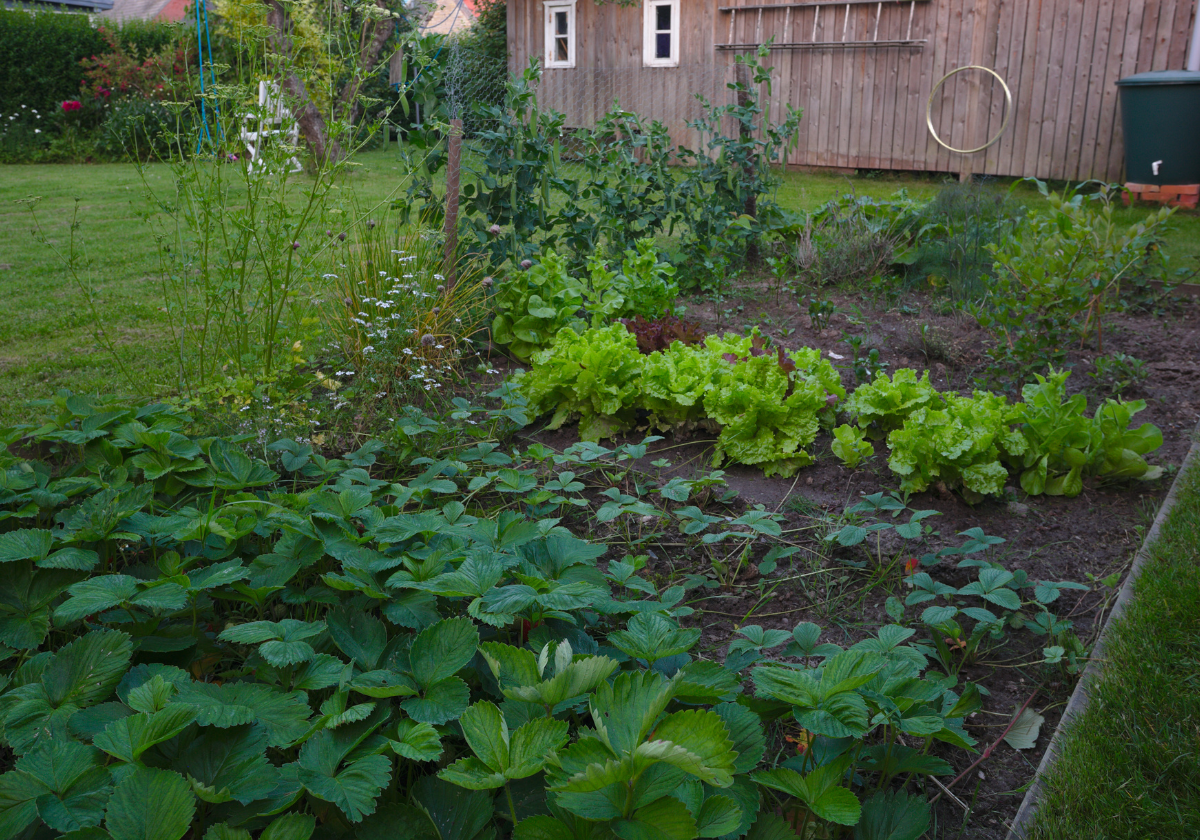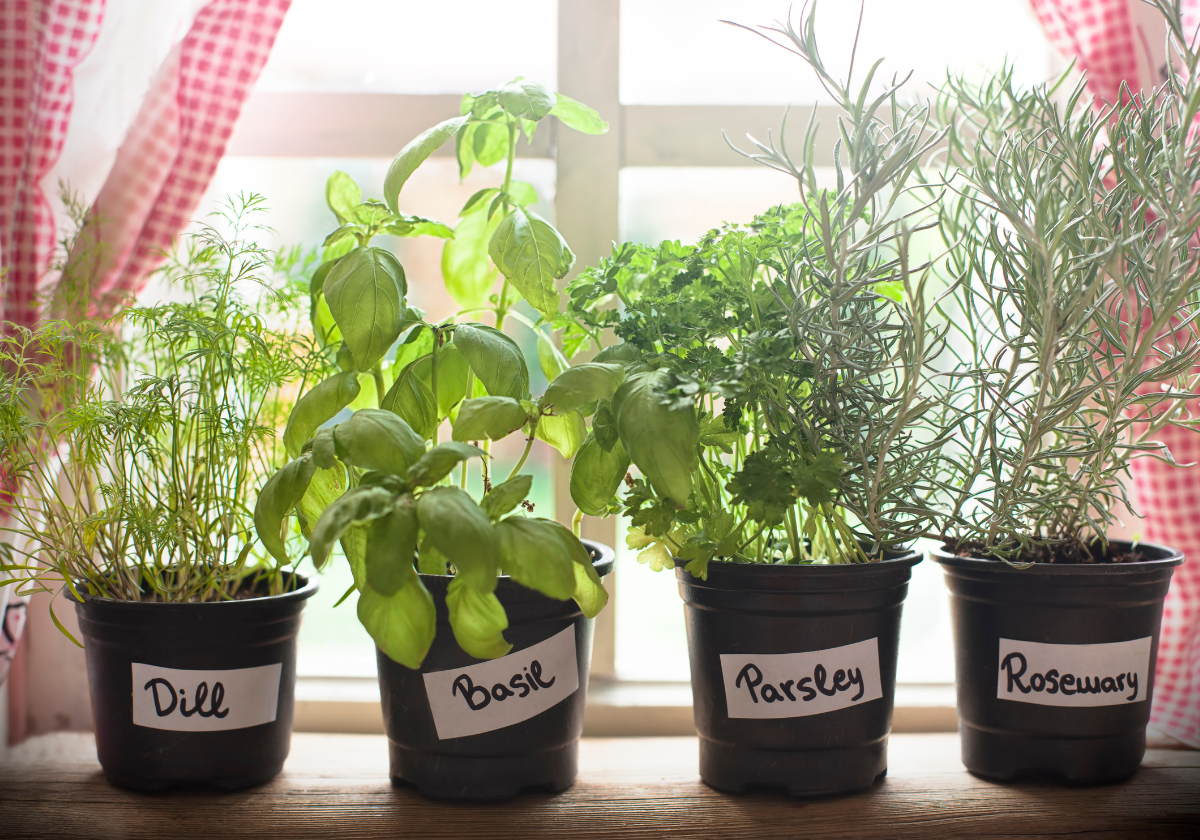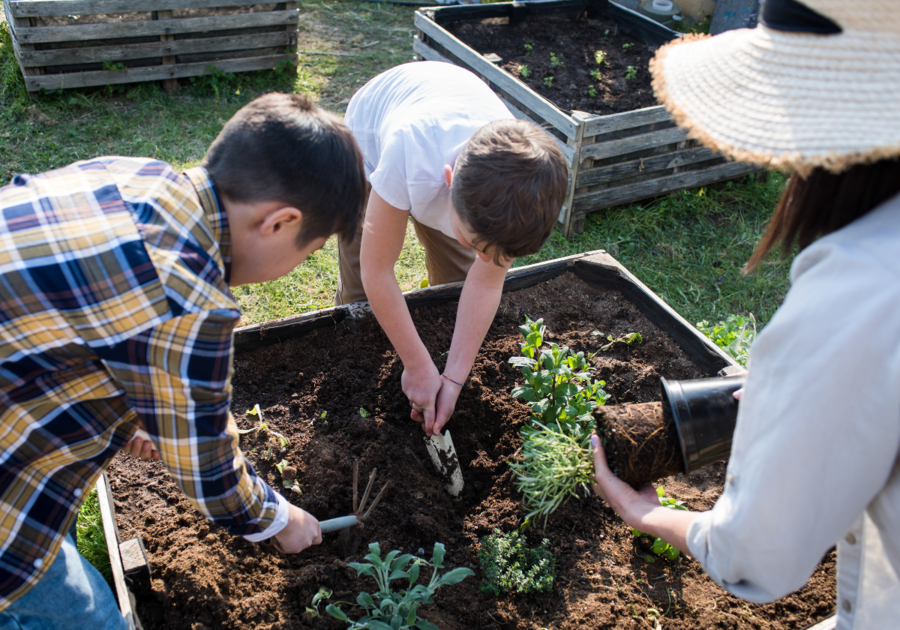Growing up, I was blessed to call a hobby farm my playground. We had cows lumbering in the fields, chickens clucking in the yard, and a garden that—at least in my childhood memory—stretched on forever. In truth, it was probably just an acre, but to little me, it felt like ten. Our pantry was stocked with jars of homegrown veggies, and the freezers were always full, ready to see us through the seasons.
As an adult, my gardens shrank—sometimes to a few pots of herbs perched on a sunny windowsill. For 13 years, I have lived in what I refer to as the “hundred acre woods.” In reality, it’s a cozy two-acre patch, thick with trees. Sunlight is a rare visitor, and the idea of growing flowers, veggies, or even harnessing a little solar power would mean saying goodbye to dozens of trees (and thousands of dollars).
For years, I toyed with the idea of joining the LEAP community gardens, but never quite took the plunge. This spring, with enthusiastic encouragment from my friend Keely Massie, the heart behind Appalachian Kitchen Gardens, I finally did it. Now, I’ve got my own little plot—a 5 x 30 foot bed at the Hurt Park Garden.

Planting season is here! In the Roanoke growing zone, we typically start at the beginning of May, after the last frost, and you can count on those treasured, home grown, tomatoes by July 4th. Since I'm a little rusty, I decided to consult perplexity.AI for a refresher on what to plant and how to maximize the space.
When using AI for anything, the more details you provide, the better your results will be. Here's the prompt I used and I am pretty impressed with the results.
"Help me plan a 5 by 30 foot garden space in Roanoke, Virginia, with a variety of herbs and vegetables. Include a planting schedule."
Perplexity quickly provided:
- A layout to maximize the space, using 5 foot sections.
- A list of suggested vegetables and herbs.
- A table showing a recommended planting and sowing schedule, including dates.
- Key tips and suggestions for how to succession plan, use trellises to maximize space, and even companion planting. (Companion plants mutually benefit each other while growing.)
Perplexity provides additional prompts to drill down into additional important topics such as testing the soil's ph level and how to remediate it, in addition to suggestions for trellises and cages to maximize space.
I would be remiss if I didn't research how much time it would take daily/weekly to tend to my patch of goodness. According to Perplexity, after the initial prep and planting, I should plan on 2-4 hours a week for ongoing maintenance. This includes:
- Daily Tasks: Watering (LEAP gardens include irrigation), quick pest checks, and harvesting ripe produce. This usually takes 10–20 minutes per day.
- Weekly Tasks: Weeding, pruning, staking or trellising vining plants, fertilizing as needed, and a more thorough pest and disease check. Plan for 1–2 hours per week, which can be split over several days or done in a single session.
- Harvesting: When crops are producing heavily, harvesting may add extra time, but this is why we do it!

If you have wanted to try growing some fresh food for your family, be encouraged. You can start with herbs in a kitchen window, and some plants in pots on your deck. My grandfather, who also had a large garden, grew cherry tomatoes in a planter on his porch. With the right soil, sunshine, and love, you can grow anywhere.
I am looking forward to getting my hands dirty this week as I prepare to plant, and can't wait to share the bounty with my loved ones. I plan to share progress and lessons learned on our social pages. I'd love for you to follow along, share your own growing progress, and encouragement.



